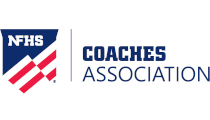Understanding your Athletic Director
High school coaches have endless responsibilities. Each season they evaluate and select talent, work on practice and contest schedules, handle paperwork, conduct meetings, and stay updated on the latest information in their sport. And that’s not to mention the day-to-day encounters with their student-athletes, parents, teachers and other coaches.
High school coaches have their hands full. However, take the aforementioned responsibilities and multiply them 50 times over all three seasons – not to mention the summer – and you have the life of a high school athletic director!
The athletic director has often been called “the coach of the coaching staff.” A high school coaching staff is the athletic director’s ”team.” Similar to a coach, the athletic director evaluates candidates and selects the individuals best suited to fill the role on his or her team.
The athletic director best understands the culture of the school and the athletic program, and he or she has the best handle on what the community expects from its coaching staff. The athletic director observes and assesses team members over the course of the season, ensuring that the student-athletes are getting the best experience possible. Like the players on a roster, the coaching staff must be a fit as well.
Aside from putting a coaching staff together, an athletic director’s responsibilities vary from the typical to the unexpected. Keeping an athletic program running smoothly requires attention to things most people take for granted. Here are just a few:
Budget
The economy has provided challenges to school districts nationwide. Athletic departments are not immune. While some athletic directors are left with no choice but to cut programs, others are able to keep their program together by “streamlining” the athletic budget. This means putting off purchasing new uniforms or certain equipment for another year or two in an effort to keep the athletes and their coaches on the field.
Eligibility
Aside from the on-field rules, there exists a plethora of regulations governing interscholastic athletics. A coach’s dream would be a 6’10” center or lightning-fast running back transferring into the school just in time for the season. While that would be a wonderful thing for any coach, an athletic director’s first thought must turn to eligibility. Questions regarding residence, guardianship, transfer circumstances, age and previous varsity status all must be investigated prior to that future all-star taking the court or the field. Failure to do so could be detrimental to the season and the program.
Scheduling
Believe it or not, it takes the coordination of multiple groups to simply play a game, let alone an entire season. Typically, the conference provides the league schedule, then it’s up to the school to fill the rest. The varsity coach and athletic director usually work together to identify opponents, but scheduling a field or court falls squarely in the lap of the athletic director to identify and avoid facility conflicts. Once the game schedule is set, then it’s time to request or schedule qualified officials. Last but definitely not least is transportation. Scheduling away contests can’t be done without a way to get there!
Weather
Making a game decision regarding weather is perhaps the easiest and hardest game-day decision an athletic director has to make. Blizzards or tornado warnings – those are no-brainers. Mother Nature takes care of that. It’s the other 90 percent of the time when the credit or the blame (usually the latter) falls on the athletic director’s shoulders. Field conditions are the primary concern. Usually a dependable grounds crew can give a reliable opinion on whether to play or not. Sometimes the road conditions are the issue. No one wants to be responsible for sending out a bus or having parents (or students) get into an accident on the way to or from an athletic event.
Supervision
“Friday Night Lights,” the Holiday Tip-Off Tournament, Homecoming or that big game against the cross-town rival are all events that coaches, alumni and community members circle on their calendar. Athletic directors circle those dates too, but for totally different reasons. Big events draw big crowds and occasionally big problems as well. An athletic director’s nightmare is the school’s program making the local newspaper for the wrong reason, like a fight on the field or in the crowd. Securing and training personnel to oversee game event management is paramount to providing a positive experience for all involved. Athletic directors need an event management team that allows coaches and officials to concentrate on the game and fans to enjoy their experience.
Putting Out Fires
Sometimes the only thing athletic directors get to cross off their daily to-do list is the date. Many times during the course of the school year, an athletic director may be faced with a challenge that wasn’t in the plans. The lights or scoreboard go out during a game, there’s a sudden change in the weather or parents are upset about cuts or playing time. A level head, good problem-solving skills and the ability to communicate on a personal level will serve an athletic director well in the unpredictable world of interscholastic athletics.
In an effort to support his or her coaches, the effective athletic director is able to manage these and other challenges with little fanfare – and many like it that way. The items listed above are just a few of the difficult or unexpected tasks athletic directors handle on a regular basis. Athletic directors work diligently to ensure that a coach has all the tools and support needed to run a successful program. Hopefully, this glimpse into the world of the athletic director provides coaches an understanding of how athletic programs stay on the field.
Liam Frawley, CMAA
Liam Frawley, CMAA, is the director of athletics for the South Orangetown Central School District (Tappan Zee High School) in Orangeburg, New York. He is also the chair of the Professional Development Committee for the New York State Athletic Administrators Association.
Most Recent Articles
- nfhs news NFHS Learning Center Delivers 25 Millionth Course
- Track & Field/Cross Country article Effective Communication with Athletes and Coaches
- nfhs news Player Equipment Changes Highlight 2025 High School Football Rules Revisions
- Player Equipment Changes Highlight 2025 High School Football Rules Revisions
- nfhs news Judgment Call on Second Contact Eliminated in High School Volleyball






